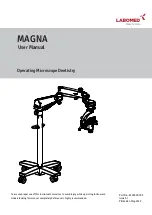
51
B.9.5
OBSŁUGA - PODNOSZENIA
Przed rozpocz
ę
ciem czynno
ś
ci podnoszenia, jest
konieczne upewni
ć
si
ę
czy powieszony ładunek jest
odpowiedni dla
ż
urawia, czy nie jest wi
ę
kszy ni
ż
pokazane
wielko
ś
ci na diagramie ud
ź
wigu
ż
urawia. Ud
ź
wigi
ż
urawia i
wysi
ę
gi s
ą
pokazane dla wysi
ę
gnika usytuowanego w
pozycji poziomej.
Nigdy nie u
ż
ywaj dodatkowego osprz
ę
tu (szakli, haków,
lin,
ła
ń
cuchów,
pasów,
itp.),
których
maksymalne
dopuszczalne obci
ąż
enie jest mniejsze ni
ż
ci
ęż
ar
podnoszonego ładunku.
Stosuj dodatkowy osprz
ę
t (szakle, haki, liny, ła
ń
cuchy,
pasy, itp.) takie, aby nie były zagro
ż
eniem bezpiecze
ń
stwa.
Umocuj ładunek na jego
ś
rodku ci
ęż
ko
ś
ci i upewnij si
ę
,
ż
e
si
ę
nie przesunie, nie wy
ś
lizgnie i nie obróci (patrz §A.11).
Unikaj
gwałtownych
ruchów,
poruszaj
d
ź
wigniami
sterowniczymi stopniowo i łagodnie (patrz. &A.11).
Nie przerywaj ruchów gwałtownie szczególnie, gdy ci
ęż
ar
jest podnoszony i obracany (patrz §A.11.
Nie kołysz ładunku (patrz §A.11).
Zbyt szybkie ruchy mog
ą
by
ć
przyczyn
ą
wypadków, ładunek mo
ż
e si
ę
wy
ś
lizgn
ąć
i spa
ść
a
ż
ywotno
ść
ż
urawia b
ę
dzie skrócona.
B.9.5 LIFTING OPERATIONS
Before beginning the lifting operations it’s necessary to
make sure that the loads to be hoisted, depending on the
crane straddle, are not greater than those indicated in the
capacity diagram stuck on crane.
The crane hoists the rated load if the boom is in horizontal
position.
Never use hoisting equipment (shackles, hooks, ropes,
chains, bands, etc.) whose maximum capacity is lower than
that be hoisted.
Apply the hoisting cables, ropes, chains, bands to the hook
so that their safety is not compromised.
Hoist the loads from centre of gravity and make sure that
they cannot move, slide and rotate (see §A.11).
Avoid sudden movements, operate the control levers gently
and gradually (see §A.11).
Do not interrupt the movements suddenly, mostly when
lowering and rotating the loads (see §A.11).
Do not swing the load (see §A.11).
Too quick or jerky movements may create
accidents, the load might drop or slip and the crane life
is reduced.
















































